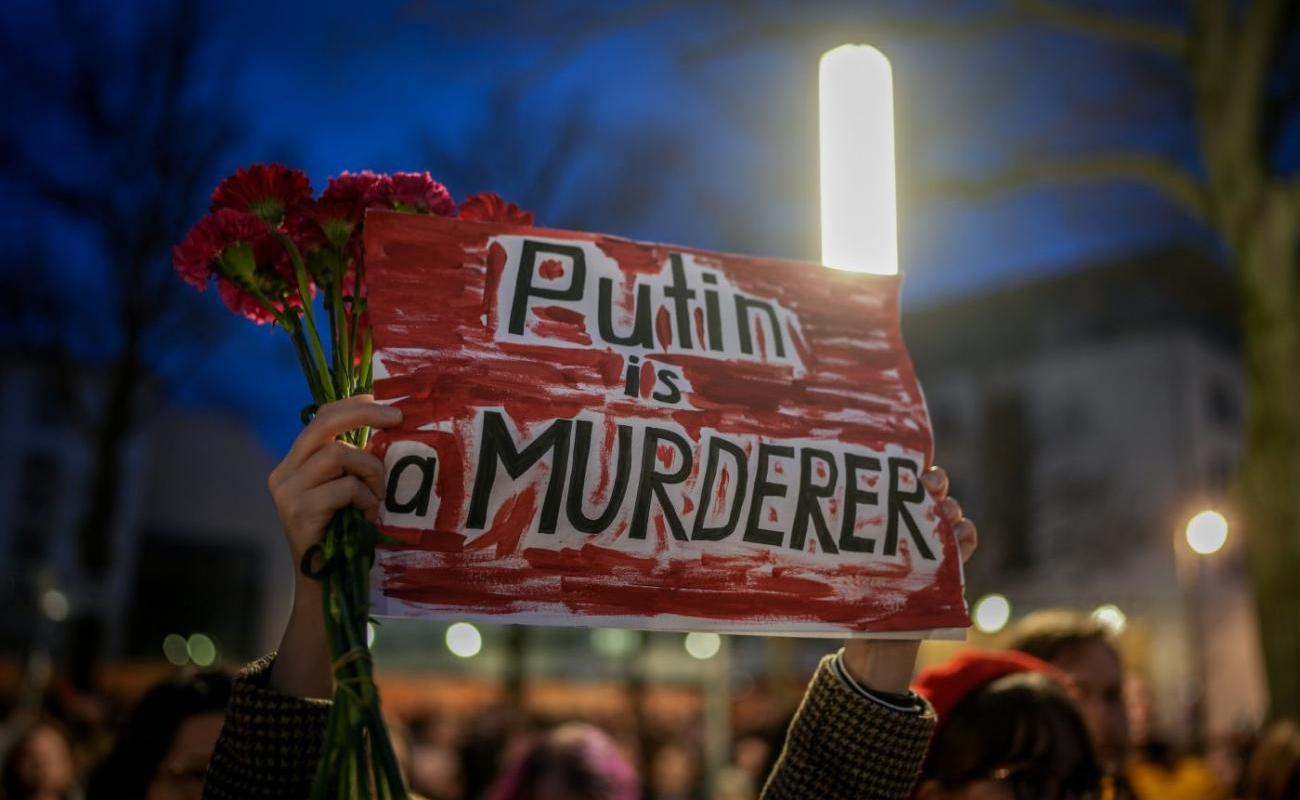Russia and the Mass Murder of Ukrainian PoWs

There is growing evidence that Moscow is repeatedly and deliberately breaching the 1949 convention on the rules of war, as it seeks to build pressure on Ukrainian forces in the east of the country.
Ukraine’s Prosecutor General said on October 14 that at least 102 Ukrainian prisoners of war (PoWs) had been killed by Russia since the full-scale invasion in February 2022, with 80% of the murders occurring this year. An assessment by the Washington-based Institute for the Study of War also reported “a theatre-wide increase in Russian executions of Ukrainian PoWs.”
Article 13 of the convention says “Any unlawful act or omission by the Detaining Power causing death or seriously endangering the health of a prisoner of war in its custody is prohibited and will be regarded as a serious breach.”
In September, the broadcaster CNN said it had received details of 15 cases, most supported by drone videos or audio intercepts, in which Ukrainian troops had been killed rather than taken prisoner.
Since the beginning of the Russian advance in September, a number of videos showing the execution of Ukrainian POWs have appeared on local Telegram channels.
In one, filmed by a Ukrainian drone during a battle in the Donetsk Region, three Ukrainian soldiers can be seen attempting to surrender. They raise their hands and lie on the ground but are shot in the back by Russian troops.
Later, one of the soldiers suspected of shooting them was himself taken prisoner and questioned by Ukrainian soldiers.
“The senior officer contacted command and they replied over the radio ‘There’s no time to deal with prisoners, don’t take them,’” the Russian soldier, who identified himself as Delyagin Gennadyevich, said in an interview posted on YouTube. “They gave the order to shoot them, which the group carried out.”
He said such orders were widespread in the Russian army during its advance in eastern Ukraine.
On October 13, nine drone operators were surrounded by Russian forces after they broke through the frontline. According to Ukrainian military Telegram channels, the squad fought back until they were out of ammunition and were shot when they tried to surrender.
In another case, on September 30, 16 Ukrainian soldiers who had surrendered were reported to have been taken to a field, lined up, and shot. Footage from a drone backs up the allegation and Ukrainian soldiers say there is further evidence from a radio intercept.
While in some cases war crimes can only be established using footage from drones, there are other instances where violations have been filmed by Russian soldiers themselves. Their videos show executions of striking cruelty and violence that have been specifically filmed, suggesting a deliberate strategy.
Perhaps the most notorious execution was filmed by Russian soldiers themselves in February last year. Tymofy Mykolaiovych, shown insouciantly smoking a cigarette following his capture, was murdered seconds after saying “Long live Ukraine,” his image and words becoming rallying symbols for an invaded people.
In September, Russian pro-war Telegram channels spread a shocking photo of what appeared to be another executed Ukrainian POW. In the photo, a man in Ukrainian combat pants can be seen lying on the ground with a sword sticking out of his chest with the words “For Kursk” written on its blade.
According to investigators using open-source intelligence, the photo was taken in a village in the Donetsk region seized by Russian forces in September.
There are Russian battalions fighting in the Kursk and Donetsk regions with a reputation for systematically torturing PoWs and recording them. Members of the 155th Brigade, for example, filmed the head of a dead Ukrainian soldier on a pole at a checkpoint in Belgorod region in August, while the neo-Nazi Rusich battalion, recently sent to patrol the border with Finland, has distributed similar footage.
While there are allegations that Ukrainian soldiers have executed Russian soldiers trying to surrender, the evidence suggests these acts are rare, individual, and not systematic, in contrast to Russian behavior.
The Ukrainian Persecutor`s Office says it will investigate allegations of war crimes by Ukrainians. Such investigations are necessary, even though they might be unpopular. In 2016, after the start of the war in Donbas, several Ukrainian soldiers were imprisoned by Ukrainian courts for their crimes.
The Ukrainian side claims to adhere to the rules of war, often publishing videos of Russian PoWs to show they are held in good conditions in Ukrainian prisons, although it was told in 2022 not to show pictures of Russian prisoners, which can be a breach of the Geneva Conventions. Russia has also shown pictures of captured men.
While Russia’s executions of PoWs have happened throughout the war, they have become more widespread and violent over the past three months, and footage of medieval-style executions has been openly published and circulated by soldiers on social media.
Russian military bloggers with millions of subscribers are also increasingly glorifying and encouraging such executions.
The intensification of war crimes and their increasing publicity appears to be a deliberate attempt to frighten Ukrainian soldiers fighting on the frontline with the threat of torture and execution if they are captured.
Russian forces are using war crimes as a psychological weapon in a deliberate escalation of their military campaign in eastern Ukraine.
Mykyta Vorobiov is a Ukrainian political adviser, journalist, and political science student at Bard College Berlin. For the last two years, he has been developing articles on politics and law for CEPA, VoxEurop, JURIST, and others.
Europe’s Edge is CEPA’s online journal covering critical topics on the foreign policy docket across Europe and North America. All opinions are those of the author and do not necessarily represent the position or views of the institutions they represent or the Center for European Policy Analysis.
